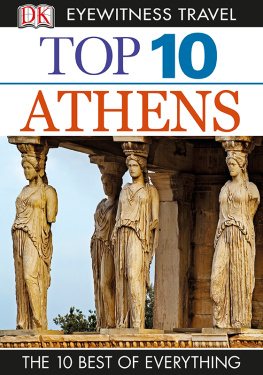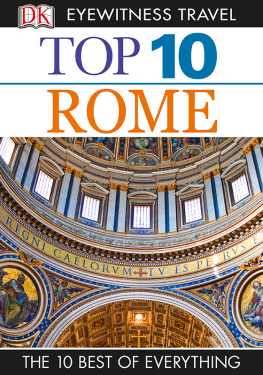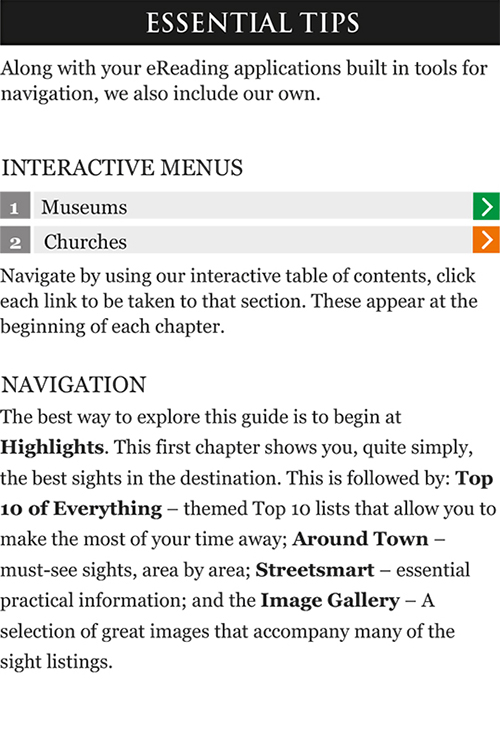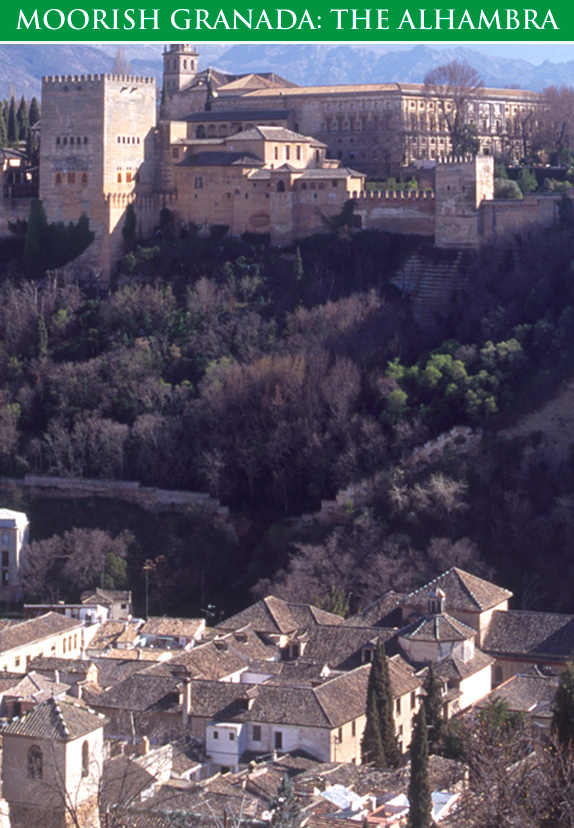Moorish Granada: The Alhambra
The great complex of the Alhambra is the best-preserved medieval Arab palace in the world and, with nearly two million visitors annually, it is also the most popular monument in Spain. Built on the largely inaccessible Sabika Hill overlooking the city of Granada, its most distinctive phase began in the 11th century as the qalat al-Hamra (Red Fort) of the Ziridian rulers. From the 13th to almost the end of the 15th century the kings of the succeeding Nasrid dynasty embellished the site in a most spectacular fashion. The later Christian additions, although handsome in their own right, are generally thought to clash with the delicate, evocative architecture of the Moors.
 Open mid-Marmid-Oct: 8:30am8pm daily, 1011:30pm FriSat; mid-Octmid-Mar: 8:30am6pm daily, 89:30pm FriSat; Closed 1 Jan, 25 Dec Adm 14.30
Open mid-Marmid-Oct: 8:30am8pm daily, 1011:30pm FriSat; mid-Octmid-Mar: 8:30am6pm daily, 89:30pm FriSat; Closed 1 Jan, 25 Dec Adm 14.30
 Google Map
Google Map
 Museo de la Alhambra 8:30am6pm WedSat (to 8pm mid-Marmid-Oct); 8:30am2:30pm Tue & Sun; closed Mon, Jan 1, Dec 25. Night visits: MaySep: 911:30pm Fri Free
Museo de la Alhambra 8:30am6pm WedSat (to 8pm mid-Marmid-Oct); 8:30am2:30pm Tue & Sun; closed Mon, Jan 1, Dec 25. Night visits: MaySep: 911:30pm Fri Free
Puerta de la Justicia
Built in 1348, this magnificent horseshoe arch makes use of Arab defensive techniques a steep approach combined with four right-angled turns to slow down invading armies.
Puerta del Vino
The Wine Gate so called because it was used as a wine cellar in the 16th century marks the main entrance arch to what was once the Medina (market).
Plaza de los Aljibes
From these ramparts visitors can enjoy superb views of Granada. The giant cisterns (aljibes) underneath were built by the Christian conquerors.
Alcazaba
Although largely in ruins, this fortress is well worth a look. Dont miss climbing up onto the Torre de la Vela for views of the Sierra Nevada.
Palacio de Carlos V
This Italian Renaissance palace is the masterpiece of Pedro Machuca, a student of Michelangelo. Housed here are the Museo de la Alhambra, with a fine collection of Nasrid art, and the Museo de Bellas Artes, with a range of interesting Christian works.  Museo de la Alhambra 8:30am6pm WedSat (to 8pm mid- Marmid-Oct); 8:30am2:30pm Tue & Sun; closed Mon, Jan 1, Dec 25. Night visits: MaySep: 911:30pm Fri Free
Museo de la Alhambra 8:30am6pm WedSat (to 8pm mid- Marmid-Oct); 8:30am2:30pm Tue & Sun; closed Mon, Jan 1, Dec 25. Night visits: MaySep: 911:30pm Fri Free
 Google Map
Google Map
Palacios Nazaries
The Nasrid palaces are built of simple brick, wood and stucco, in keeping with Islamic thought not to compete with the creations of Allah.
Palacio de Mexuar
The most poorly preserved of the three palaces, this area was the most public space, dedicated to judicial and bureaucratic business. The original structure dates from 1365, but there are obvious Christian overlays, since it was converted to a chapel in the 16th century.
Palacio de Comares
Built in the mid-14th century, this area constituted the Serallo, where the sultan would receive dignitaries and deal with diplomatic issues. Inside is the Saln de Embajadores, the main throne room of the Alhambra. In front of the palace is the Patio de Arrayanes, where serene fountains and pools, fragrant plantings, and elaborate wood and stucco work are all strictly geometric in design yet delicately refined, often featuring inscribed poems in praise of Allah.
Palacio de los Leones
Dating from the late 1300s, this palace was the Harem, the private zone reserved for the sultan and his family. The fountain of12 lions, in the central courtyard of the palace, may represent the 12 signs of the zodiac, the 12 hours of the clock, or the 12 tribes of Israel.
Partal
As you leave the Alhambra, stroll through the gardens with their fountains and watercourses laid out in an area that used to have palaces of its own. All you can see of them now are five porticoed arches. This area leads up to the , the summer palace.

Tip: There are snacks and drinks available within the compound, but taking your own bottle of water is a good idea.

Tip: Visitor numbers are restricted, so avoid queues by booking tickets in advance, through your hotel, by phone (
958 92 60 31) or online at www.alhambra-patronato.es
Moorish Granada: Generalife
The Towers
Following the gardens of the as you walk towards the Generalife, you will encounter a number of restored Moorish towers built into the wall. The Torre de los Picos, Torre del Cad, Torre de la Cautiva, Torre de las Infantas, Torre del Cabo de la Carrera and Torre del Agua are all worth a look for their fine detail, as well as for the views they command. The Torre de la Cautiva and the Torre de las Infantas are twin tower-palaces with richly decorated rooms.
The Hill of the Sun
A footbridge flanked by two towers takes you over to the hill that rises above the Alhambra. A vast summer palace once stood here, amid 75 acres (30 ha) of gardens, which predated the Alhambra by a century, although little of it now remains.
The Name of the Garden
The word Generalife is generally considered to be a corruption of the Arab phrase

































 Open mid-Marmid-Oct: 8:30am8pm daily, 1011:30pm FriSat; mid-Octmid-Mar: 8:30am6pm daily, 89:30pm FriSat; Closed 1 Jan, 25 Dec Adm 14.30
Open mid-Marmid-Oct: 8:30am8pm daily, 1011:30pm FriSat; mid-Octmid-Mar: 8:30am6pm daily, 89:30pm FriSat; Closed 1 Jan, 25 Dec Adm 14.30 Google Map
Google Map Tip: There are snacks and drinks available within the compound, but taking your own bottle of water is a good idea.
Tip: There are snacks and drinks available within the compound, but taking your own bottle of water is a good idea.